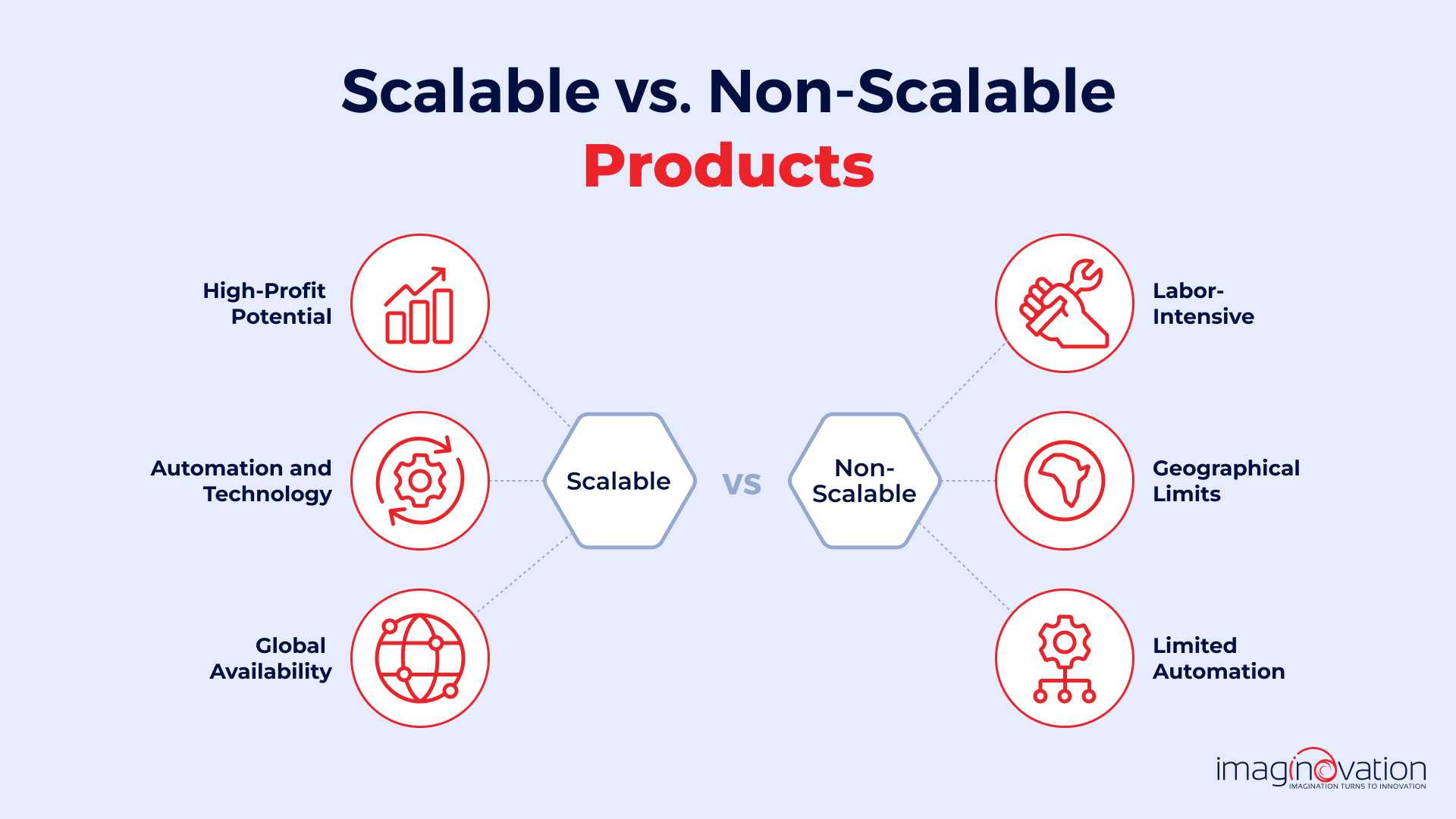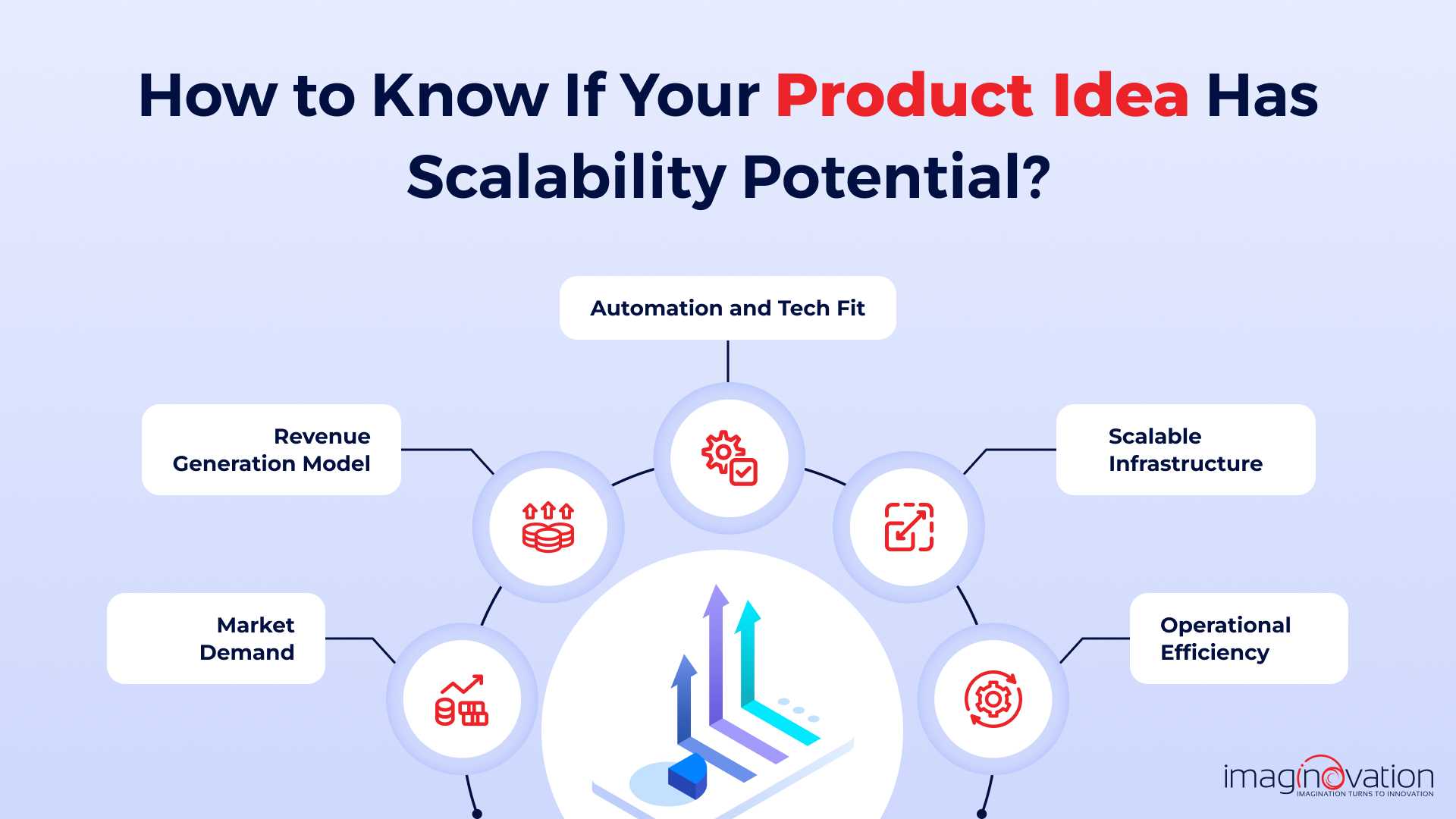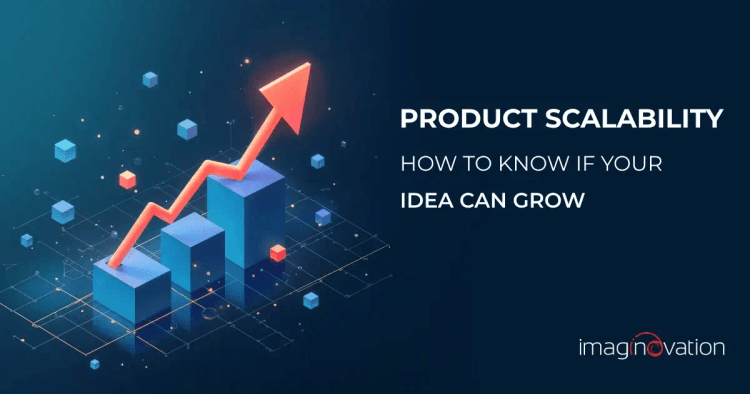What makes a business idea succeed in the long run? The answer is scalability. It determines whether a business can grow without losing its profitability.
Now, think about your own business or product idea. Do you think it can handle rapid growth? Will it continue to perform well as demand increases?
Whether you’re launching something new or expanding an existing product, scalability is key. But it’s not just about growth; it’s about growing smart.
So, what does it take to scale an idea? And if you’re at the point where growth is necessary, how do you do it the right way? How do you know if your product has real potential to scale?
These are the big questions every entrepreneur faces. In this blog, we’ll answer them, explore real-world examples, and break down how to measure scalability.
Let’s dive in!
What Does Product Scalability Mean?
So, what does the term "product scalability" even mean? Let's see.
Product scalability refers to its ability to handle increased load without compromising performance or efficiency. Simply put, a scalable product remains fast, efficient, and responsive even as its user base and data volume grow.
The biggest difference between scalable and non-scalable products is based on how they handle growth, i.e., increased demand.
What are Scalable Products?
A scalable product is made with the intention and ability to grow. It includes products and services that can be replicated, delivered, or distributed efficiently to an increasingly large number of customers across a large region—even globally.
A scalable product can grow its customer base and revenue faster than the cost increase. It can serve more customers without a big rise in expenses. This leads to massive growth because the potential for expansion is virtually unlimited when revenue increases faster than costs.
Key Characteristics:
- High-Profit Potential: Costs remain low even as sales increase, leading to high-profit margins.
- Automation & Technology: Production and distribution rely on automation and technology.
- Global Availability: Can be sold to a broad audience, often without geographical limits.
Examples:
- Software (apps, SaaS, digital tools)
- E-books and online courses
- Subscription-based digital products
What are Non-Scalable Products?
Non-scalable products are often associated with small businesses. They are difficult to reproduce or distribute in large volumes without significantly increasing costs or labor. These products usually require customization or even physical presence.
Key Characteristics:
- Labor-intensive: Requires hands-on work, making mass production difficult.
- Geographical Limits: Often tied to a specific geographical location or market.
- Limited Automation: Hard to automate without losing quality or uniqueness.
Examples:
- Handmade products
- One-on-one physical consulting
- Local hair salon service
Why Scalability Matters for Startups?

Startups operate in a high-risk, high-return environment, aiming to capture markets and scale rapidly.
To achieve this, they need strong foundations in their early stages, focusing on product development, customer acquisition, market research, and creating defensible value.
Scaling requires access to resources and networks that support expansion, making it a key factor in long-term success. In particular, product scaling is crucial for driving profitability, increasing revenue, and expanding customer reach.
So, what are the benefits of building a scalable product?
1. Market Growth: Product scalability allows startups to reach more people and build customer bases without significant hiccups.
2. Cost Efficiency: You can save money by building products that can handle more users without burning cash on expensive infrastructure or hiring massive teams to handle growth.
3. Competitive Advantage: Startups with scalable products can stay ahead of the competition by quickly adapting to market changes. In a fast-evolving landscape, the ability to scale smoothly allows businesses to pivot, expand, and outperform competitors.
4. Customer Satisfaction: As your user base grows, so do their expectations. A scalable product ensures a smooth, reliable experience—keeping customers satisfied and loyal.
5. Attracting Investors: Investors love startups that can scale. A scalable product signals long-term growth potential, making it easier to secure funding and fuel your expansion.
What happens if you ignore scalability?
1. Lost Opportunities: Startups may miss out on opportunities to grow if their products cannot handle more users or demand.
2. Reputation Damage: Ignoring scalability can lead to bad experiences for users. This might hurt the startup's reputation and drive customers away. And once trust is broken, winning customers back isn’t easy.
3. Growth Stagnation: Some startups may struggle to grow or change with the market if their products aren't scalable.
4. Increased Costs: Trying to fix scalability issues later can be expensive and time-consuming and impact the startup's finances.
5. Loss of Competitors: If you don’t have a scalable business but your competitors have scalable products, they will likely take the lead and outperform you in market share.
How to Know If Your Product Idea Has Scalability Potential?
Ensure your product idea is scalable, starting from the first stage of your startup—the ideation stage. Without scalability potential, your product may hit a growth peak and become stagnant. So, how should you determine if your idea has scalable potential?
Here are the key indicators that tell you if your product idea has scalability potential.
1. Market Demand
One of the primary indicators of your product idea’s scalability potential is the size and demand of your target market.
Ask yourself: How many people need or demand this product/service? How much are they willing to pay? How often will they use it?
Consider the level of competition as well. A scalable idea typically targets a large, growing, or underserved market that isn’t saturated or dominated by a few key players.
Equally important is the ability to differentiate your offering and build a loyal customer base for sustained growth.
2. Revenue Generation Model
Another key indicator of your product idea’s scalability potential is its ability to generate revenue.
Ask yourself: How will this idea make money? What are the costs and profit margins? How will you acquire and retain customers while delivering consistent value and quality?
A scalable idea should have a clear, profitable business model with multiple recurring revenue streams.
As you grow, you should be able to reduce costs and improve efficiency. Before scaling, ensure you have sufficient funding to avoid financial risks. This can come from crowdfunding, venture capital, or angel investors.

3. Automation and Tech Fit
Check if technology can enhance your product, improve efficiency, and support innovation. Assess how it can lead to the automation of processes, reduce manual efforts, and scale operations effectively.
Additionally, consider using advanced technologies, such as data analytics, to make informed decisions and facilitate continuous improvement in your product.
It's important to remember that a scalable idea should be built on a strong technological foundation with automation strategies that enable growth while saving time and resources.
4. Scalable Infra: Ability to Handle Increased Volume
Another indicator that your product idea can grow without hiccups is its ability to handle more users without slowing down or causing problems.
A scalable product should let you add new features smoothly. It should cope with the increasing number of new users and high demand without costing much more. Also, it should be able to use cloud services and modern tech to scale up as required.
5. Operational Efficiency
Check how efficient your operations are.
Scalability hinges on operational efficiency, ensuring that your processes are streamlined and adequate to support growth without sacrificing quality.
How to Measure the Scalability of A Product?
Planning product scaling is both exhilarating and challenging. As operations expand, it's crucial to understand the key metrics and methods that drive product scalability. Here are the essential indicators to help you measure your product's scalability.
1. Identify Scalability Criteria
To measure and optimize your product's scalability, first define what scalability means for your product. Identify key metrics that reflect your goals, such as user growth, revenue, retention, performance, security, expansion of features set, and cost.
Based on market research, user feedback, and competitive analysis, set realistic, measurable goals for every metric.
2. Create Test Scenarios & Run Scalability Tests
Develop realistic test scenarios that simulate increasing loads and usage patterns to assess your product's performance under stress. Consider factors like peak usage hours, seasonal fluctuations, and demand spikes.
Conduct tests to evaluate how your product handles traffic surges, large data volumes, or complex feature requests. Tools like LoadRunner, JMeter, or BlazeMeter can help you run these tests and gather data.
3. Measure Elasticity & Adaptive Behavior.
Assess your product's elasticity by seeing how well it adjusts resources as demand changes. Check if it can handle load fluctuations, scale efficiently, and maintain performance without manual intervention.
4. Analyze Results.
After running scalability tests, analyze the results to identify strengths and weaknesses. Compare actual performance with scalability goals to look for gaps, bottlenecks, and inefficiencies.
Focus on metrics like response time, throughput, resource usage, and error rates under varying loads.
5. Implement the Right Solution.
Based on findings in the above step, implement solutions to address scalability issues.
Prioritize critical problems and apply effective fixes, such as scaling the infrastructure, optimizing code, caching data, or using microservices and cloud services. For example, you might optimize database queries to reduce load times during peak traffic.
6. Iterate with Monitoring.
Finally, regularly monitor and improve your product’s scalability. Use tools like Google Analytics, Mixpanel, or New Relic to monitor metrics and gather user feedback with tools like SurveyMonkey or Hotjar.
Apply these insights to identify and implement scalability improvements. For example, you might spot a performance drop during peak hours and optimize server resources to handle the load.
Real-World Examples of Scalable Products
Here are some prominent real-world examples of products that have successfully scaled to meet growing demands while maintaining their performance and reliability.
1. AWS - Amazon Web Services
Amazon Web Services is a leading example of a highly scalable business model. It offers cloud computing services that enable businesses to scale and grow their infrastructure as needed.
Companies can easily adjust computing capacity, storage, and other resources based on demand, making it an exceptionally scalable solution.
2. Netflix
Netflix exemplifies scalability at its best. Its journey began in 1997 as a mail-based DVD rental service. After a major database outage in 2008, the company migrated to Amazon Web Services (AWS) and shifted from a monolithic architecture to microservices, enhancing resilience and scalability.
To support its growing global audience, Netflix developed its own content delivery network, Open Connect, ensuring high-quality streaming for over 260 million users worldwide as of 2024.
3. Uber
Uber’s scalability journey shows how a disruptive idea can grow into a global leader. Starting as a ride-hailing app, Uber quickly expanded by creating algorithms to optimize routes, pricing, and driver matching with technology.
They adapted to local markets and tackled regulatory challenges. This mix of innovation and flexibility helped Uber handle millions of rides daily.
4. Tesla
Bold decisions and innovation have defined Tesla's scalability journey. Initially, the company aimed to create high-performance electric vehicles that could rival traditional automakers.
Scaling production was challenging, but Tesla addressed this by vertically integrating key components, like battery production, to control costs and drive innovation. This approach allowed rapid scaling, reduced reliance on external suppliers, and improved efficiency.
Conclusion
In conclusion, building a scalable product requires careful preparation and planning. Once you have a scalable idea, focus on iterating and improving your product to drive revenue growth with minimal incremental costs.
At Imaginovation, we are dedicated to supporting and empowering entrepreneurs throughout this journey. We understand the challenges startups face in product scalability. Contact us today to build a highly scalable digital product.
Ready to build an app, but not sure where to start?
We've got you covered. Click the button below to get started.





